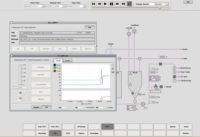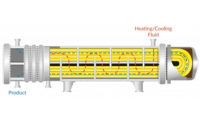Software tools make a difference in dairy processing
Dairy processors that leverage the optimal software can enhance product quality, safety and operational efficiencies.










The launch of cutting-edge software is adding sophistication and simplicity to the monitoring of dairy processing operations. Companies that invest in the evolving technologies will be in a strong position to accurately analyze plant performance while receiving real-time data for astute decision-making. For best results, analysts note, processors must incorporate the appropriate tools for their circumstances, which includes keeping within their financial and performance parameters.
“New product development and innovation in the dairy industry are more important than ever,” says Bryan Seyfarth, director, consumer goods, for Bloomington, Minn.-based software developer Sopheon Corp. “Enterprise solutions for digital innovation transformation are becoming must-haves and enabling companies to streamline and optimize new product development processes and portfolios.”
The proper software can enable companies to better standardize processes and keep all cross-functional team members in sync across the entire product lifecycle, “from strategy to idea to launch to retirement,” he notes.
Enhanced capabilities
In addition to enhancing processing operations, software is strengthening ancillary functions outside of the plant.
Seyfarth says, for instance, that tools are evolving to better support such tasks as route reconciliation with salespersons and their supply chains, warehouse management, voice picking that rapidly allows the filling of orders in warehouses, route optimization and logistics to maximize route efficiency, and handheld ordering systems for route drivers.
Indeed, dairy processing software is progressing in parallel with consumer software and providing greater support to mobile devices, says Robert Brice, president of El Dorado Hills, Calif.-based RFgen Software. It is enabling workers who operate away from processing plants or information sources to receive critical operational intelligence such as the inventory levels for different locations, he notes.
Among the most effective software for dairy processing are visualization, or human-machine-interface (HMI), tools, which give operators greater insight into different plant functions, says Dan Jacoby, automation solution consultant for Malisko Engineering Inc., a St. Louis-based process automation engineering firm.
He notes, for instance, that HMI enables users to simultaneously track multiple production procedures, including those involving cream, retentate and permeate during milk processing, while monitoring different variables, including flows, pressures and temperatures.
“A well-laid-out HMI gives processors the ability to track various processes seamlessly from a single location without having to run around looking at disparate pieces of information,” Jacoby states.
Such software is making it easier for managers to analyze operations by collecting and aggregating data from myriad sources while receiving reports in an easily digestible format, he notes.
“There is a wide variety of activity occurring in different areas of processing plants, and it is important that operators can see into these processes,” Jacoby says, adding that such data are especially vital for processors that are transforming a single item such as raw milk into a variety of products, which can include cream, butter, buttermilk, buttermilk powder and milk permeate.
Dairy processing software also is crucial for alerting personnel when technology malfunctions occur, including stuck valves or burned out pumps, and monitoring key performance indicators (KPIs). Production measurements, for instance, may include butterfat content, cheese pH, flow rates in and out of evaporators and cooking times and temperatures, he states.
“The most valuable software for dairy processing offers one unified system that manages both quality and production, while providing real-time views and alerts that allow users to make adjustments quickly based on intelligent insights,” adds Brent Robertson, customer leader of factory MES at Aptean, an Atlanta-based enterprise software provider. “Additionally, a robust self-service reporting layer empowers dairy industry processors with the tools needed to analyze large sets of data efficiently and maximize output.”
Keep traceability top of mind
In addition, traceability software that can track contaminated substances to the point of origin during recalls to facilitate prompt removal and disposal of products is an “absolute must” for dairy processors, Brice states.
“As governmental regulations for food safety continue to tighten, the risk of a food or ingredient recall increases,” he notes. “Companies operating without traceability tools for inventory will find it difficult, if not impossible, to track ingredients because they lack accurate records.”
Such processors “will have to dispose of good product along with contaminated items just to be safe,” Brice says. “The inability to respond quickly to contamination or a recall can lead to fines, legal action and irreparable damage to the company’s brand.”
Important, too, is the use of software that enables dairy processors to track compliance with USDA’s Food Safety Modernization Act (FSMA), says Mike Hubbard, senior vice president of revenues for Tracegains Inc., a Westminster, Colo.-based software developer.
FSMA lists specific actions food producers must take to help prevent foodborne illness. The rule covers such topics as personnel, equipment, buildings, sanitary facilities and food safety plans.
“It is essential that dairy processors leverage technology that makes their facilities more safe, efficient and productive while reducing costs,” Hubbard notes.
Operators also must forecast the issues they will eventually have to address when making software purchasing decisions, Seyfarth says.
“The best practice is to identify the ‘minimum viable’ solution to solve problems, while creating a phased plan for a journey that will increase their innovation maturity over the long term,” he states.
Software, meanwhile, will become increasingly functional, and operators will be able to reduce technology costs by leveraging the same tools to support different applications such as the production of ice cream or cheese, Jacoby says.
“That is powerful because it reduces the need for processors to use multiple pieces of software for an operation,” he notes, stating that greater software flexibility also will enable users to seamlessly integrate newer software with added functionality into their systems over time.
Among the potential add-ons are historians that track KPIs in real time while embedding data into the HMI so that they are easily accessible to operators on plant floors, as well as alarms and events tools that can alert operators to deviations occurring within a process — for example, having a KPI fall outside its acceptable limits, Jacoby says.
Enhancements to sensing technologies are further enabling users to garner massive amounts of production information, Hubbard states, noting that “the acceleration of artificial intelligence is making it simpler for processors to gain valuable insights from this data and be proactive in preventing food contamination while improving operational efficiencies.”
Newer applications also are powering business networks and helping dairy processors connect and collaborate with their global suppliers and automate processes “that were once out of reach with traditional software systems,” he says.
Cost remains a concern
While software is becoming more utilitarian, dairy processors still must solve cost issues if they are to leverage the most functional tools for their specific operations.
Software prices can range from tens of thousands of dollars to hundreds of thousands of dollars, in accordance with such variables as the number of users able to log into an information system and the amount of data the technologies are generating, Jacoby states.
Integration expenses, however, can be two to three times the cost of the software, he says.
“The more expensive software has out-of-the-box functionality and requires less time to configure,” Jacoby states. “Less expensive software requires more integration, which can end up having a higher cost than the expensive software.”
He notes that it is crucial for processors to team with integrators that can work within the operators’ budgets, as well as consultants who can educate the companies on the plethora of software options and make recommendations.
“Processors need to closely review the features and ask probing questions about how the software will work with their existing systems to avoid overkill in their selections,” Jacoby states. “They must know what they are trying to accomplish and what they want the end result to be.”
That can include deciding if their aim is to grow a system that will encompass the entire processing operation, or limiting activities with no plans for future expansion.
In addition, processors must consider how they will support the software — for example, on a PC or a server — and the additional licensing they may need for different applications, he says.
“There are many solutions and system architectures processors can use,” Jacoby notes. “Operators must ensure they are selecting appropriate options to what they are trying to accomplish and avoid oversized choices.”
Cost-conscious processors, for instance, might gradually add software that aligns with their key business drivers and available resources.
Indeed, Jacoby says that processors should refrain from “trying to take on too much in their initial project when, ultimately, an incremental approach actually may deliver better value.”
Target the relevant technologies
Operators also can drive automation without investing in expensive IT infrastructures, expertise, maintenance and switching by using software as a service (SaaS), in which processors license centrally hosted software on a subscription basis rather than buy and install software on individual computers, Hubbard notes.
Other software options include tools that support mobile devices so workers can instantaneously collect and update inventory or material data regardless of their location, Brice says.
Mobility also creates a safer working environment by enabling social distancing and reducing germ transfer by eliminating paper and manual data entry, while allowing continuous visibility into all inventory at every company location, he adds.
Because many processors face budgetary constraints and must incorporate software on a piecemeal basis, it is important that the tools are easy to integrate over time, Jacoby says.
“It makes the most sense to stick with one software provider for a more seamless integration of different types of applications,” he notes.
Robertson adds that processors should seek out-of-the-box software that both aligns with their key business drivers and rapidly delivers return on investment.
“It is important for processors to look beyond the basics and consider systems that can grow with their strategic initiatives,” he states. “Operators need to ensure they are staying up to date with current software versions to leverage the new functionality that developers add.”
However, while incorporating advanced software is vital for producing the highest quality and safest dairy products in an efficient manner, processors still must convince management of the necessity of investing in such tools, Seyfarth states.
“It is the degree of support and sponsorship that comes from senior executives,” that will govern technology decisions, he notes. “Cross-functional business leaders, including executives from research and development, marketing, supply chain and manufacturing, must visibly support the initiatives. This means going beyond lip service.”
Looking for a reprint of this article?
From high-res PDFs to custom plaques, order your copy today!












